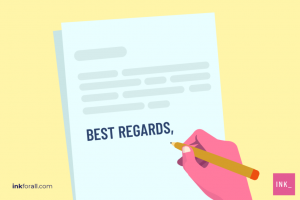Best Regards and Other Ways to End an Email
Other Ways to End an Email
Whether you’re writing to a friend, coworker, or client, an appropriate email closing is important. It can help you leave a positive impression on the recipient, and it can show that you’re thoughtful about your communication. However, choosing a good sign-off can be challenging. A common choice is “Best regards,” but it can feel a bit impersonal or generic. Fortunately, there are other ways to how to end an email that can make it more friendly and personal.
Choosing the right sign-off will depend on your relationship with the person you’re communicating with and the context of the email. Here are some other options to consider:
Kindest regards – This is a semi-formal option that conveys respect without being too familiar. It’s a great choice for introductory emails or emails to people in a higher professional position than you.

Best Regards and Other Ways to End an Email
With appreciation – Similar to Kindest regards, but with an extra scoop of formality. This is a good option for formal emails, particularly those with a thank you note or follow-up message.
All the best – A simple and neutral way to close an email. This is a good choice for nearly all situations. Take care – A warm and friendly way to end an email. This is a good option for casual emails, particularly those to friends or family.
Catch you later – A playful and casual option that can add a bit of personality to your email. This is a good option for emails to friends or colleagues who have a quirky sense of humor.
Stay tuned – A great way to encourage engagement and keep your recipient engaged in your future correspondence. This is a good choice for upcoming events, or to share some exciting news about your work.
See you soon – A casual way to close an email, that can be used in both personal and professional emails. This is a good option for when you’ll be seeing someone shortly, or in the very near future.
There are many other options to try as well, including “Yours sincerely,” “Respectfully yours,” and “Yours faithfully.” These can be more formal, but they still feel friendly and professional. They’re also a good choice for emails that are addressing someone who you don’t know very well. Finally, “Yours cordially” can be very formal and sound a bit stiff, so it’s best saved for more formal emails such as those to new professional contacts. Choosing the right email closing isn’t easy, but it can make all the difference in leaving a positive impression on your recipient. By being aware of the different options available, you can choose an appropriate email sign-off for any situation. With a little creativity and effort, you’re sure to find the perfect way to end an email.